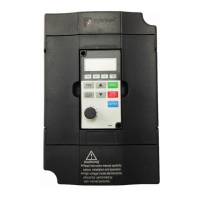Chapter 6 EMC (Electromagnetic Compatibility)
6-1.Definition
Electromagnetic compatibility refers to the ability that the electric equipment runs
in an electromagnetic interference environment and implements its function stably
without interferences on the electromagnetic environment.
6-2.EMC Standard
In accordance with the requirements of the Chinese national standard
GB/T12668.3, the inverter must comply with the requirements of electromagnetic
interference and anti- electromagnetic interference.
Our existing products adopt the latest international standards: IEC/EN61800-3:
2004 (Adjustable speed electrical power drive systems part 3:EMC requirements and
specific test methods),which is equivalent to the Chinese national standards
GB/T12668.3. EC/EN61800-3 assesses the inverter in terms of electromagnetic
interference and anti-electronic interference. Electromagnetic interference mainly tests
the radiation interference, conduction interference and harmonics interference on the
inverter (necessary for civil inverter)
Anti-electromagnetic interference mainly tests the conduction immunity, radiation
immunity, surge immunity, EFTB (Electrical Fast Transient Burs) immunity, ESD
immunity and power low frequency end immunity (the specific test items includes: 1.
Immunity tests of input voltage sag, interrupt and change; 2.commutation notch
immunity; 3. harmonic input immunity ; 4. input frequency change; 5. input voltage
unbalance; 6. input voltage fluctuation) . The tests shall be conducted strictly in
accordance with the above requirements of IEC/EN61800-3, and our products are
installed and used according to the guideline of the Section 7.3 and can provide good
electromagnetic compatibility in general industry environment.
6-3.EMC Directive
6-3-1.Harmonic Effect
The higher harmonics of power supply may damage the inverter. Thus, at some
places where the quality of power system is relatively poor, it is recommended to install

